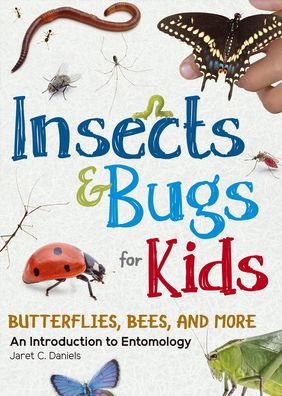Table of Contents
All About Bugs 6
An Insect's Body 10
Insect Development 14
What Insects Eat 16
Why Insects Are Small 17
Why Insects Are Important 18
How and Where to Fill Bugs 34
Beware of Bites, Stings, and Other Hazards 35
On or Under Logs 36
Beneath Tree Bark 41
On the Ground or Under Other Objects 43
On Plants 46
On Flowers 48
At Lights 50
In or Near Water 52
Common Insects and Bugs 55
Butterflies and Moths (Order Lepidoptera) 56
Bees, Wasps, and Ants (Order Hymenoptera) 70
True Bugs (Order Hemiptera) 76
Beetles (Order Coleoptera) 84
True Flies (Order Diptera) 90
Dragonflies and Damselflies (Order Odonata) 94
Grasshoppers, Katydids, and Crickets (Order Orthoptera) 97
Cockroaches and Termites (Order Blattodea) 99
Earwigs (Order Dermaptera) 99
Caddisflies (Order Trichoptera) 100
Dobsonflies and Fishflies (Order Corydalidae) 100
Antlions and Lacewings (Order Neuroptera) 101
Mayflies (Order Ephemeroptera) 102
Praying Mantises (Order Mantodea) 102
Walking Sticks (Order Phasmida) 103
Spiders (Order Araneae) 103
Centipedes (Class Chilopoda) 105
Earthworms (Order Megadrilacea) 106
Millipedes (Order Julida) 106
Harvestmen (Order Opiliones) 107
Sowbugs and Pillbugs (Order Isopoda) 107
Projects and Activities 109
Attracting Insects with a Light 110
Bug Observation Supply List 113
Raising Caterpillars 114
Moth Baiting 117
Planting a Pollinator Container Garden 119
Recommended Reading 122
Glossary 124
About the Author 128



